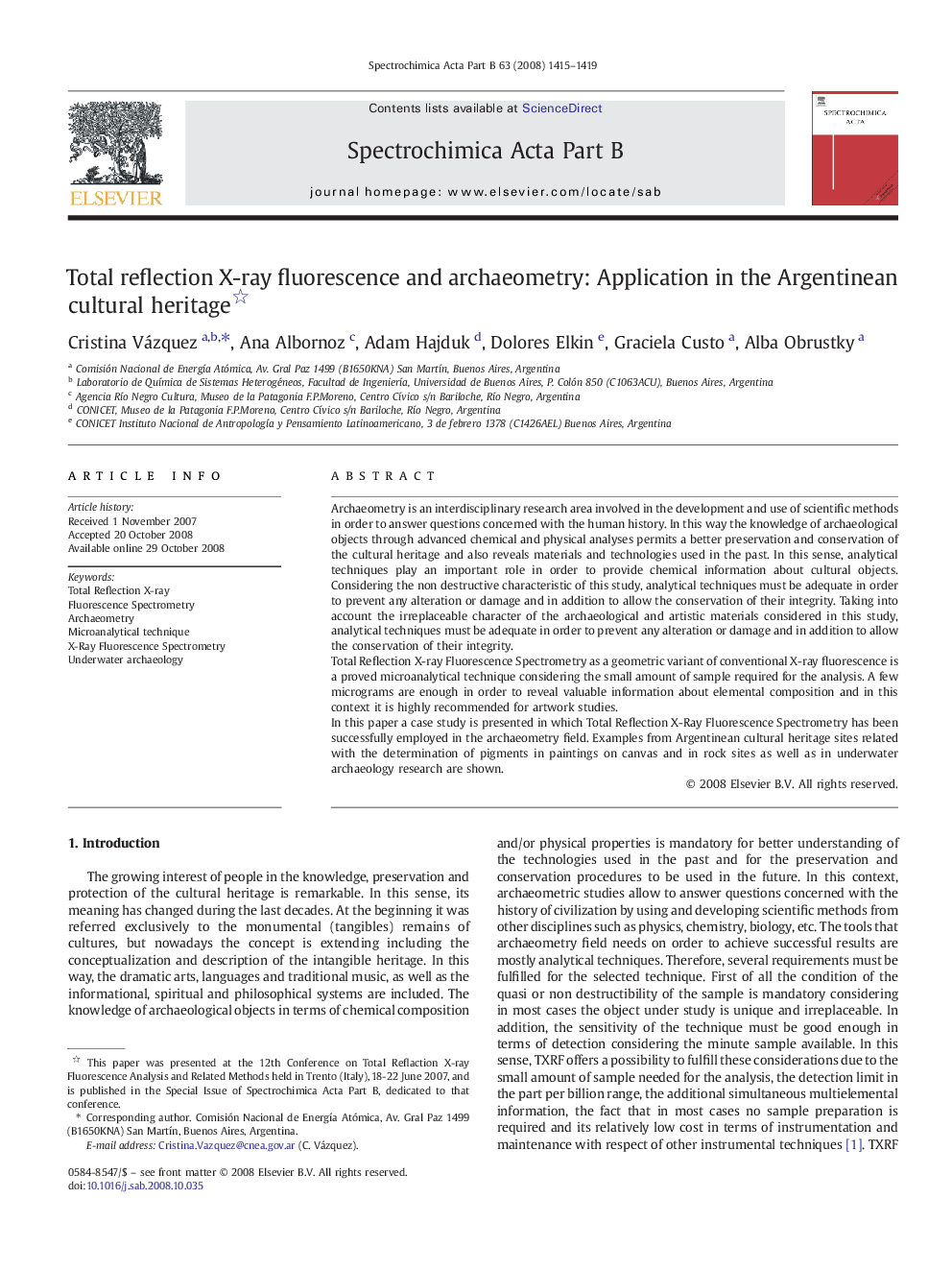| Article ID | Journal | Published Year | Pages | File Type |
|---|---|---|---|---|
| 1241153 | Spectrochimica Acta Part B: Atomic Spectroscopy | 2008 | 5 Pages |
Archaeometry is an interdisciplinary research area involved in the development and use of scientific methods in order to answer questions concerned with the human history. In this way the knowledge of archaeological objects through advanced chemical and physical analyses permits a better preservation and conservation of the cultural heritage and also reveals materials and technologies used in the past. In this sense, analytical techniques play an important role in order to provide chemical information about cultural objects. Considering the non destructive characteristic of this study, analytical techniques must be adequate in order to prevent any alteration or damage and in addition to allow the conservation of their integrity. Taking into account the irreplaceable character of the archaeological and artistic materials considered in this study, analytical techniques must be adequate in order to prevent any alteration or damage and in addition to allow the conservation of their integrity.Total Reflection X-ray Fluorescence Spectrometry as a geometric variant of conventional X-ray fluorescence is a proved microanalytical technique considering the small amount of sample required for the analysis. A few micrograms are enough in order to reveal valuable information about elemental composition and in this context it is highly recommended for artwork studies.In this paper a case study is presented in which Total Reflection X-Ray Fluorescence Spectrometry has been successfully employed in the archaeometry field. Examples from Argentinean cultural heritage sites related with the determination of pigments in paintings on canvas and in rock sites as well as in underwater archaeology research are shown.
